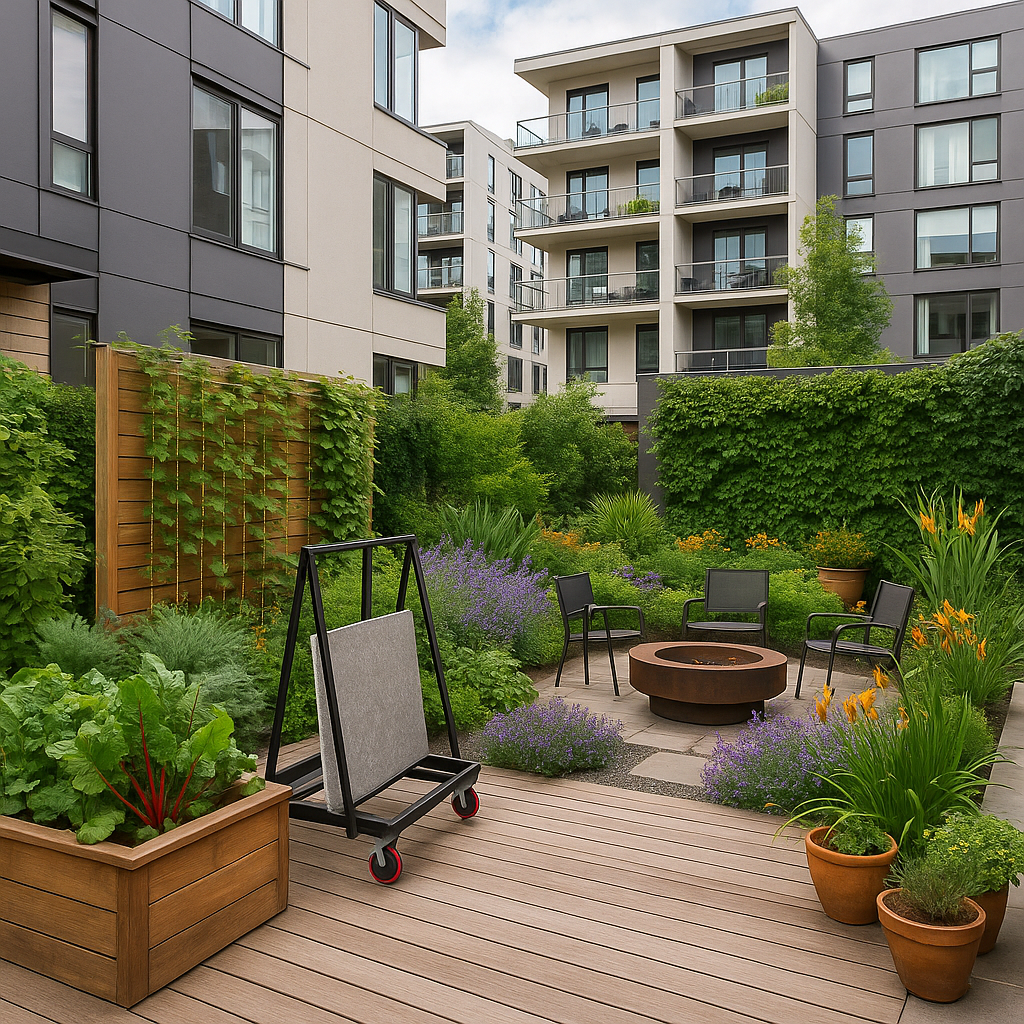Urban housing is evolving rapidly in 2025, blending sustainability, livability, and aesthetics into compact spaces. At the heart of this transformation is the way we define landscape in city environments. No longer limited to suburban lawns or sprawling estates, urban landscapes today emphasize smart design that maximizes small spaces, integrates greenery into architecture, and creates a healthier, more resilient environment for city dwellers.
From rooftop gardens to vertical green walls, designers and homeowners are reimagining what urban housing can look like when outdoor areas are planned with creativity and purpose. This article explores innovative landscape ideas shaping modern urban housing, highlighting sustainable practices, technological integration, and design strategies that bring nature back into the city.
The Evolution of Urban Landscape Design
In dense city environments, open land is scarce. As a result, modern urban housing landscapes must deliver functionality, beauty, and sustainability in tight quarters. To define landscape in this context means recognizing the relationship between architecture, people, and natural systems.
Where once landscaping was treated as an afterthought, it is now central to urban housing projects. Developers, architects, and city planners understand that green infrastructure enhances property value, reduces environmental impact, and fosters community well-being.
Urban landscapes today are not just decorative—they are multifunctional systems designed for climate resilience, biodiversity, and daily human use.
Key Ideas to Define Landscape in Urban Housing
1. Rooftop and Balcony Gardens
Rooftop and balcony gardens are among the most popular ways to introduce greenery in high-density housing. These spaces transform unused or underutilized surfaces into vibrant green sanctuaries.
Features include:
- Container plants for easy mobility and seasonal variation.
- Lightweight soil systems to reduce structural load.
- Small trees and shrubs for shade and privacy.
- Irrigation systems designed for efficient water use.
Balconies and rooftops designed with gardens not only improve residents’ quality of life but also help cool urban environments, mitigating the “heat island” effect.
2. Vertical Green Walls
Vertical gardening allows even the narrowest urban spaces to thrive with life. These walls use modular planters, trellises, or hydroponic systems to grow vegetation on building facades, fences, or interior courtyards.
The benefits are striking:
- Improved air quality by absorbing pollutants.
- Natural insulation that regulates building temperature.
- Enhanced aesthetics, turning plain walls into living art.
This approach demonstrates how designers define landscape trends in modern gardens by rethinking what constitutes “green space” in compact housing.
3. Low-Water, Sustainable Planting
Water conservation is a cornerstone of sustainable urban landscaping. Homeowners and designers are turning to drought-tolerant plants, native species, and innovative irrigation systems.
Replacing lawns with low-water plants offers multiple benefits:
- Reduced water bills and environmental footprint.
- Pollinator-friendly habitats for bees and butterflies.
- Gardens that thrive despite climate change challenges.
Instead of lawns, think gravel pathways lined with succulents, ornamental grasses, or flowering perennials that provide year-round color and resilience.
4. Fire-Resistant and Resilient Plant Choices
As climate change increases environmental stressors, resilient and fire-resistant plants are finding their way into city landscapes. Hardy species like sago palms, euonymus, and native grasses not only enhance beauty but also provide safety and longevity in gardens where durability is key.
This reflects how urban gardens incorporate both define landscape geography: design and natural systems and practical resilience.
5. Wildlife-Friendly Urban Spaces
Urban gardens are not just for people anymore—they’re being designed to support wildlife. Pocket parks, parkway gardens, and pollinator patches in driveways or strips between sidewalks are becoming common.
These spaces often include:
- Birdhouses and butterfly-friendly plantings.
- Native flowers that attract bees.
- Water features for birds and insects.
The goal is to restore balance between humans and nature in cityscapes, where biodiversity is often threatened.
6. Multifunctional Outdoor Rooms
Even in small courtyards, patios, or rooftop decks, outdoor “rooms” are becoming popular. These spaces integrate seating, dining, and cooking areas into compact but versatile landscapes. Lighting, weather-resistant furniture, and smart irrigation systems extend their usability throughout the year.
Urban landscapes now balance function and art, embodying define landscape art inspiration for modern designers by merging creativity with practical needs.
Materials and Tools That Define Modern Landscapes
Smart Material Handling
Building and maintaining urban landscapes often involves moving heavy stone, glass, or metal elements. Tools like a Transport frame make it safer and easier to manage large slabs of stone, tiles, or panels in tight construction spaces. These tools support both safety and efficiency in modern garden construction.
Eco-Friendly Materials
Sustainability in material selection is essential. Popular choices include:
- Recycled stone or concrete for pavers.
- FSC-certified wood for decking and pergolas.
- Energy-efficient lighting systems.
- Glass panels paired with sustainable construction, often enhanced with energy-saving solutions like insulating glass unit selection tips for architects.
Urban Garden Trends for 2025
The trends emerging for urban housing align with broader movements in garden design:
- Portable Plants: Containers allow renters or city residents to bring gardens into small, temporary spaces.
- Mental Well-Being Spaces: Meditation corners, firepits, and private reading nooks enhance personal wellness.
- Nostalgic Touches: Cottage-style designs and classic flowers like roses and peonies are making a comeback.
- Educational Engagement: Workshops, webinars, and hands-on garden tours are helping urban gardeners learn new methods and share sustainable practices.
These trends show how define landscape types: natural features in design informs not only aesthetics but also emotional and environmental value.
Final Thoughts
To define landscape in modern urban housing means rethinking how limited space can serve multiple purposes—beauty, sustainability, comfort, and ecology. From rooftop gardens to vertical green walls, from wildlife-friendly plantings to fire-resistant species, today’s urban landscapes are more than decorative. They are systems that enhance city living while responding to the global challenges of climate change, biodiversity loss, and human well-being.
By integrating smart tools like the Transport frame, sustainable materials, and design strategies rooted in creativity and resilience, modern gardens can transform even the smallest urban housing project into a thriving green retreat.
Urban landscapes are no longer optional—they are essential for creating livable, future-ready cities.

